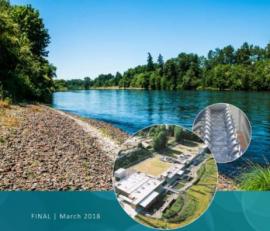- Community
-
- About Sherwood Sherwood Heritage Center Chamber of Commerce Marjorie Stewart Center Sherwood Center for the Arts Sherwood YMCA Family Resources
- Events and Activities City Calendar Library Events Community Events Event Permits Monument Posting Request Community Meeting Rooms Recreation Parks and Trails Directory Recreation Programs Sherwood Fieldhouse
- Community Field House Sherwood Demographics Sherwood School District Sherwood Youth Sports Utilities Volunteer Opportunities Highway 99 Pedestrian Crossing Public Safety Police Tualatin Valley Fire & Rescue
-
- Business & Development
- Government
-
- City Council Boards and Committees Urban Renewal Agency Agendas and Minutes Municipal Code Public Records
- Building City Attorney City Manager Code Compliance Community Development Community Services Economic Development Emergency Management Engineering
- Finance Human Resources Library Municipal Court Parks & Recreation Planning Police Public Works Utility Billing
-
- Online Services
-
- Job Opportunities Utility Billing Alerts & Notifications Email Subscriptions Sherwood Flash Alert Police Flash Alert Events and Meetings Agendas and Minutes Calendar
- Contact the City Submit a Request or Concern City Offices Municipal Code Documents and Forms Documents and Reports Forms and Applications
- Social Media
-
Willamette River Water Treatment Plant Update 2017
Commissioned in 2002, the Willamette River Water Treatment Plant (WRWTP) has a treatment capacity of 15 million gallons per day (mgd). Of this capacity, Wilsonville owns 10 mgd, and the Tualatin Valley Water District (TVWD) initially owned 5 mgd. The District invested in the plant's construction, oversizing many of its facilities to enable expansion for its own future water needs. The existing property along the Willamette River in Wilsonville is irregularly shaped, creating two semi-contiguous parcels called the Lower Site and the Upper Site. During original design, the Lower Site, home to the existing treatment plant, would allow for an expansion of up to 60 mgd. The Upper Site was identified for future development in the Willamette River Water Treatment Plant Master Plan (MWH, 2006), which demonstrated enough space for at least 100 mgd additional capacity. Combined, both sites have a 160 mgd potential total capacity.
Since the 2006 Master Plan was published, several actions occurred that affect both construction and operational planning for expanding the WRWTP:
• In 2012, the TVWD sold its 5 mgd of plant capacity to the City of Sherwood.
• In 2013, the TVWD and the City of Hillsboro named the mid-Willamette supply alternative as their preferred supplemental supply, which laid the foundation for the Willamette Water Supply Program (WWSP).
• In 2014, the city of Wilsonville led a coalition of utilities that petitioned the Oregon Health Authority (OHA) for the right to recognize the disinfection benefits from intermediate ozonation.
• In 2015, the City and WWSP stakeholders updated the WRWTP Master Plan (MWH, 2006) in the 2015 MPU (Carollo, 2016) to outline how the existing plant could be expanded to meet future demand.
• As of 2017, the WRWTP is expected to supply Wilsonville and Sherwood exclusively. However, the oversized river intake and raw water pumping station will be expanded to supply raw water to both the WRWTP and the proposed WWSP treatment facilities.
The 2017 MPU updates the 2015 WRWTP MPU and addresses these changes. The 2017 MPU has the following key objectives.
1. To define the steps for expanding the existing WRWTP infrastructure to maximize the return on previous investments.
2. To optimize process selection and layout to meet capacity and water quality goals at the expanded WRWTP.
3. To strategize near- and long-term plant expansion for a 20-year planning horizon and cash-flow to guide future financial planning.
4. To ensure that WWSP-related facilities, including raw water pumping, surge protection, and standby power infrastructure, do not impact operation or prevent the Cities of Wilsonville and Sherwood from meeting their ultimate build-out demands for the existing WRWTP on the current site.





